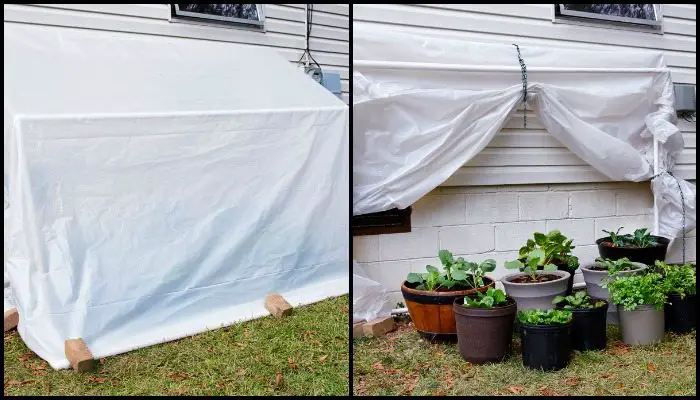Need a greenhouse but still haven’t found the perfect one for your garden? Here’s an interesting idea you might want to try: a fold-down greenhouse. It’s perfect for small gardens, too!

This fold-down greenhouse works very well and is convenient to use! Made simply with PVC pipes and plastic sheeting, this greenhouse idea is simple and easy to build.
The only downside to consider is that this greenhouse might not last in places where winds blow hard. But if you live in a favourable location, then you will definitely love this greenhouse which is also a nice, quick solution for protecting your plants from critters.
Think this fold-down greenhouse will work in your area?
Contents
Building a Fold-Down Greenhouse
Materials
- 8 – 1-inch x 10-foot-long PVC Pipes
- 8 – 1-inch Elbow Fittings
- 2 – 1-inch Tee Fittings
- 4 – 1¼-inch Elbow Fittings
- 2 – ¾-inch x 5 foot pieces Metal Conduit
- 2 – ¾-inch x 5-foot-long pieces Metal Conduit
- 1 box #8 x ¾-inch Lath Washer Head Screws
- 2 – ¼-inch x 3-inch Bolts
- 25 feet of 12-foot wide 4 mm Plastic Sheeting (UV-rated will last longer)
- 3 – 2- to 3-foot lengths of Coated Light-duty Utility Chain
- 3 Spring Links
- 2 to 4 – 1¼-inch Pipe Straps
- 2 to 3 Plastic-Body Spring Clamps
- several pieces of Bricks or Paver
Tools
- Hacksaw / Jigsaw / Miter Saw
- Rubber Mallet / Sledge Hammer
- Drill / Driver
- Spring Clamps
- ¾-inch Soil/Garden Auger Drill Attachment (optional)
Instructions
Preparation
- Gather all materials and tools listed to ensure everything is on hand before starting.
- Measure and plan the area where your fold-down greenhouse will be located. Ensure the space is sufficient and accessible.
Frame Construction
- Cut the PVC pipes using the hacksaw, jigsaw, or miter saw into the desired lengths for the frame. The exact lengths will depend on the size and shape you want for your greenhouse.
- Assemble the base frame by connecting PVC pipes with the 1-inch elbow and tee fittings. Use a rubber mallet to secure the fittings tightly.
- Build the vertical supports by attaching PVC pipes vertically to the base frame using the remaining elbow and tee fittings.
- Create a top frame similar to the base frame and attach it to the vertical supports, forming a rectangular prism structure.
Door and Cover Installation
- Construct the door frame using PVC pipes and 1¼-inch elbow fittings. This frame will attach to one side of the greenhouse structure.
- Attach the metal conduit pieces across the top of the structure for additional support using the pipe straps. This will prevent the plastic sheeting from sagging.
- Cover the structure with UV-rated plastic sheeting. Carefully drape the plastic over the frame, ensuring it covers all sides with extra length at the bottom for securing.
- Secure the plastic sheeting using lath washer head screws at strategic points to hold it in place while allowing for easy removal or opening.
Fold-Down Mechanism
- Install the fold-down mechanism by attaching the coated light-duty utility chains to both sides of the greenhouse frame. Use the spring links to attach the ends of the chains to the frame and the base.
- Adjust the length of the chains to control how far down the greenhouse folds. Experiment with different lengths to find the most convenient setting for your needs.
Final Touches
- Secure the greenhouse to the ground using bricks or pavers at the base to add weight and stability.
- Install spring clamps on the plastic sheeting to roll up or secure sides for ventilation easily.
- Optional: Drill holes for the auger attachment if you plan to secure the greenhouse further or to install an irrigation system.
Click on any image to start lightbox display. Use your Esc key to close the lightbox.![]()
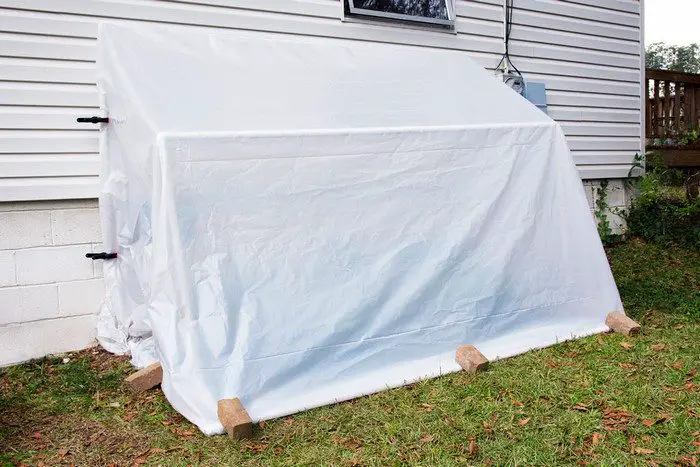
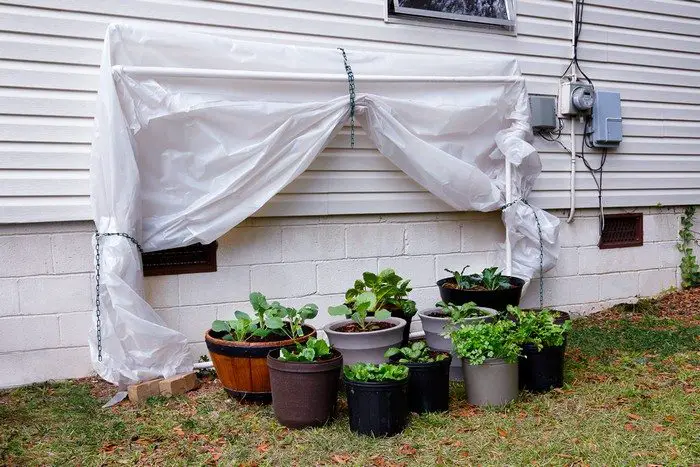
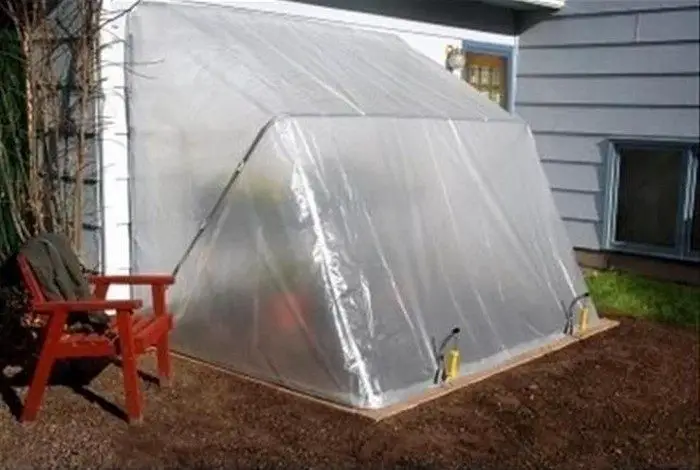

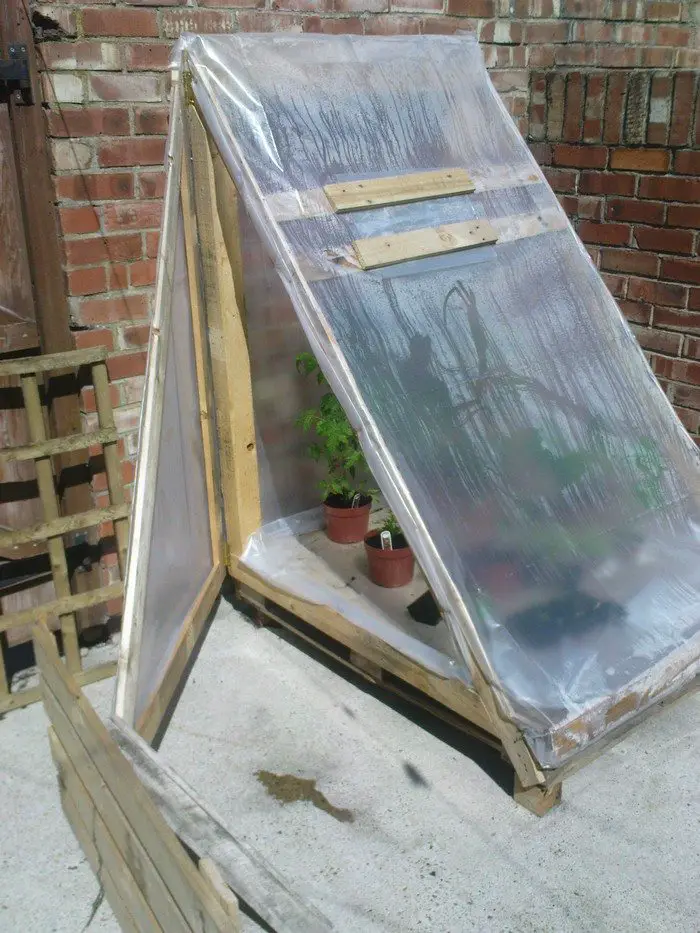
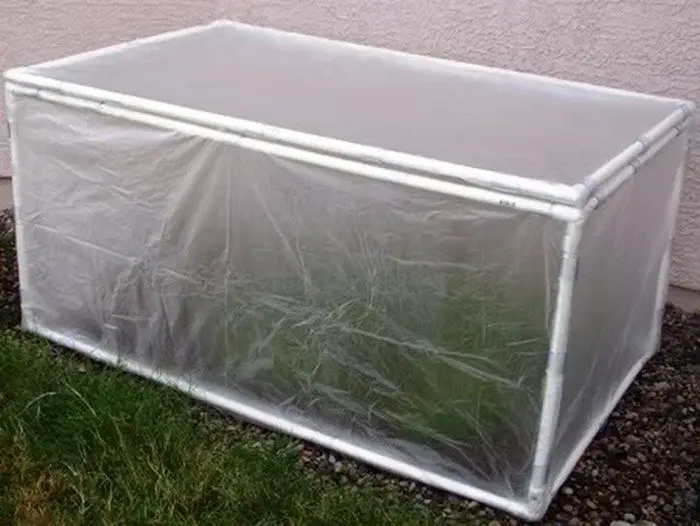
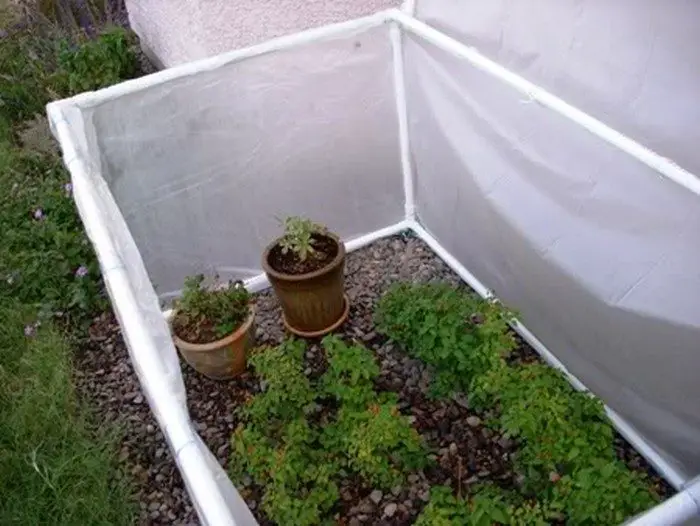
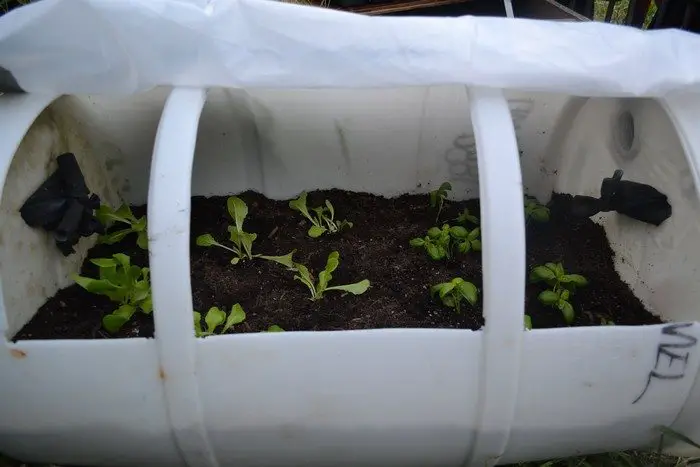
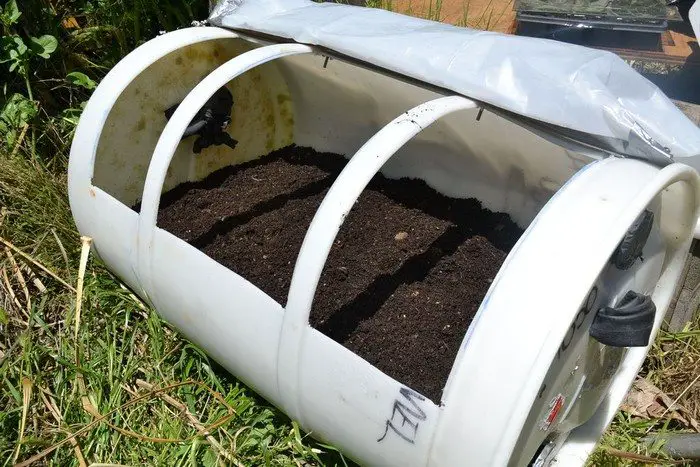
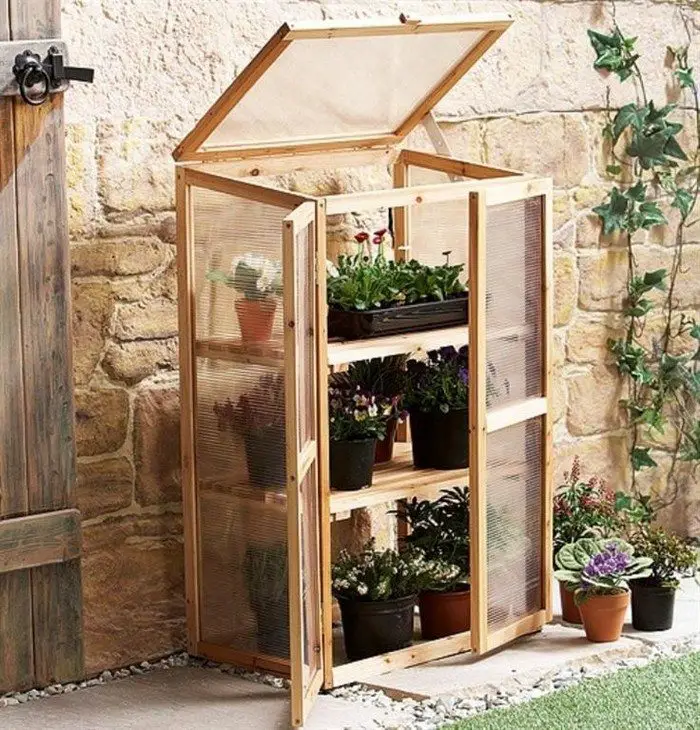
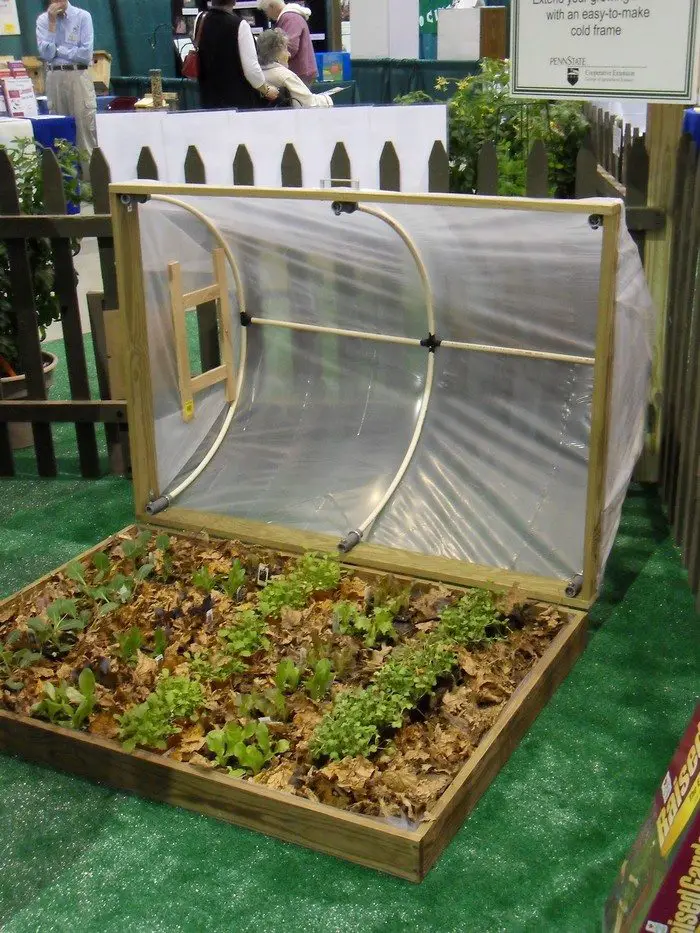

Irrigation Solutions for Small Greenhouses
Managing water efficiently is crucial for the health of plants in any greenhouse environment. For owners of small, fold-down greenhouses, finding the right irrigation solution can significantly impact plant growth and ease of maintenance. This section explores practical irrigation strategies tailored to small, fold-down greenhouse setups’ unique needs, ensuring your plants receive the right amount of water without overuse or waste.
Understanding the Needs of Your Fold-Down Greenhouse
Before selecting an irrigation method, consider the specific requirements of your fold-down greenhouse. The size and your home’s climate can impact the amount of water you need for your garden. Fold-down greenhouses, with their adaptable design, benefit from flexible and scalable irrigation solutions that can adjust to their dynamic nature.
Drip Irrigation Systems
This system delivers water directly to the base of each plant through a network of tubing and emitters. It’s an efficient method for small, fold-down greenhouses, as it minimizes water wastage and reduces the risks of leaf diseases.
A drip irrigation system can be customized to fit the specific layout of your fold-down greenhouse, ensuring that each plant receives an adequate amount of water. The system can be manually operated or fitted with a timer for automatic watering, making it a convenient solution for busy gardeners.
Self-Watering Containers
Ideal for small-scale gardening in fold-down greenhouses, self-watering containers are equipped with reservoirs that provide a consistent water supply directly to the roots. This method benefits fold-down greenhouses, ensuring that plants remain hydrated even when the structure is folded down, and mobility is required. Self-watering containers also help conserve water and are perfect for gardeners who prefer a low-maintenance approach.
Hand Watering
While seemingly basic, hand watering allows for high control and flexibility, which is beneficial in a fold-down greenhouse setup. When manually irrigating each, you can give just the right amount of water to specific plants. For adequate hand watering in a fold-down greenhouse, consider using a watering can with a long spout for reach and a fine rose to mimic gentle rain.
Automated Sprinkler Systems
A computerized sprinkler system can be a valuable addition to a fold-down greenhouse for gardeners looking to combine efficiency with technology. Compact sprinklers can be installed within the greenhouse structure and programmed to water the plants at specific intervals. While this method offers convenience and time-saving benefits, it’s essential to ensure that the water coverage is evenly distributed and that the system is compatible with the fold-down functionality of the greenhouse.
Choosing the right irrigation solution for a fold-down greenhouse involves balancing efficiency, water conservation, and plant needs. Whether opting for a drip irrigation system, self-watering containers, hand watering, or an automated sprinkler system, the key is maintaining consistent soil moisture while maximizing the unique benefits of fold-down greenhouses.
Integrated Pest Management for Greenhouses
Integrated Pest Management (IPM) is a green way of removing insects and other small animals from eating your plants using eco-friendly methods. For owners of fold-down greenhouses, implementing an IPM strategy is essential to protect their plants from pests while ensuring the greenhouse remains a safe, eco-friendly environment.
This section delves into IPM practices suited for the unique conditions of fold-down greenhouses, aiming to help gardeners maintain a healthy balance between pest control and plant health.
Monitoring and Identification
- Regular Checks: The first step in an effective IPM strategy for fold-down greenhouses is regular monitoring and accurate identification of pests. Regularly inspect your plants for signs of pest activity, including damage and pests. This proactive approach allows for early detection and identification, which is crucial for effective management in the confined space of a fold-down greenhouse.
- Use of Traps: Implementing sticky traps and pheromone traps inside the fold-down greenhouse can help monitor and reduce pest populations. These traps effectively identify the types of pests present and gauge their activity levels, enabling more targeted control measures.
Cultural Practices
- Sanitation: Keep your fold-down greenhouse clean and free of plant debris and standing water, which can attract pests and provide breeding grounds. Regular cleaning and disinfecting of the greenhouse structure, especially when folded down, can prevent pest infestations.
- Crop Rotation: Practicing crop rotation within the fold-down greenhouse can disrupt pest life cycles, reducing their impact on your plants. Rotating plants based on their susceptibility to certain pests can be a simple yet effective strategy.
Biological Controls
- Beneficial Insects: Introducing beneficial insects that prey on harmful pests can be an effective control method within the ecosystem of a fold-down greenhouse. Ladybugs, predatory mites, and parasitic wasps are natural predators that can help manage pest populations.
- Microbial Pesticides: These pesticides contain microorganisms like bacteria, fungi, or viruses that target specific pests without harming plants, beneficial insects, or the environment. They are particularly suitable for the enclosed space of a fold-down greenhouse, where chemical pesticide use should be minimized.
Physical and Mechanical Controls
- Barriers and Screens: Installing fine mesh screens on the fold-down greenhouse’s ventilation openings can prevent pests’ entry. Additionally, row covers or plant collars can protect individual plants from pests while allowing light and water to reach them.
- Manual Removal: For small-scale pest infestations, manually removing pests or infested plant parts can be effective. This method is particularly feasible in fold-down greenhouses due to their compact size.
Chemical Controls
- Selective Pesticides: If chemical intervention is necessary, select selective pesticides that target specific pests while causing minimal harm to beneficial organisms and the environment. Always follow the manufacturer’s instructions and apply the minimum effective dose to reduce the risk of resistance development.
Implementing Integrated Pest Management in a fold-down greenhouse involves a combination of vigilance, preventive measures, and targeted interventions. By adopting IPM practices, gardeners can sustainably protect their plants from pests and align with fold-down greenhouses’ unique advantages. This holistic approach not only addresses pest issues but also enhances the overall health and productivity of the greenhouse ecosystem.
Conclusion
Building a fold-down greenhouse offers a flexible and efficient solution for gardeners seeking to protect and nurture their plants in various weather conditions. This adaptable structure maximizes space in small gardens, providing an ideal environment for growing various plants. With the right materials, tools, and creativity, anyone can construct a fold-down greenhouse, unlocking the potential for a thriving, year-round garden.
You can boost your garden’s function with a garden tool shed. Read our guide on how to build your custom garden tool shed.

